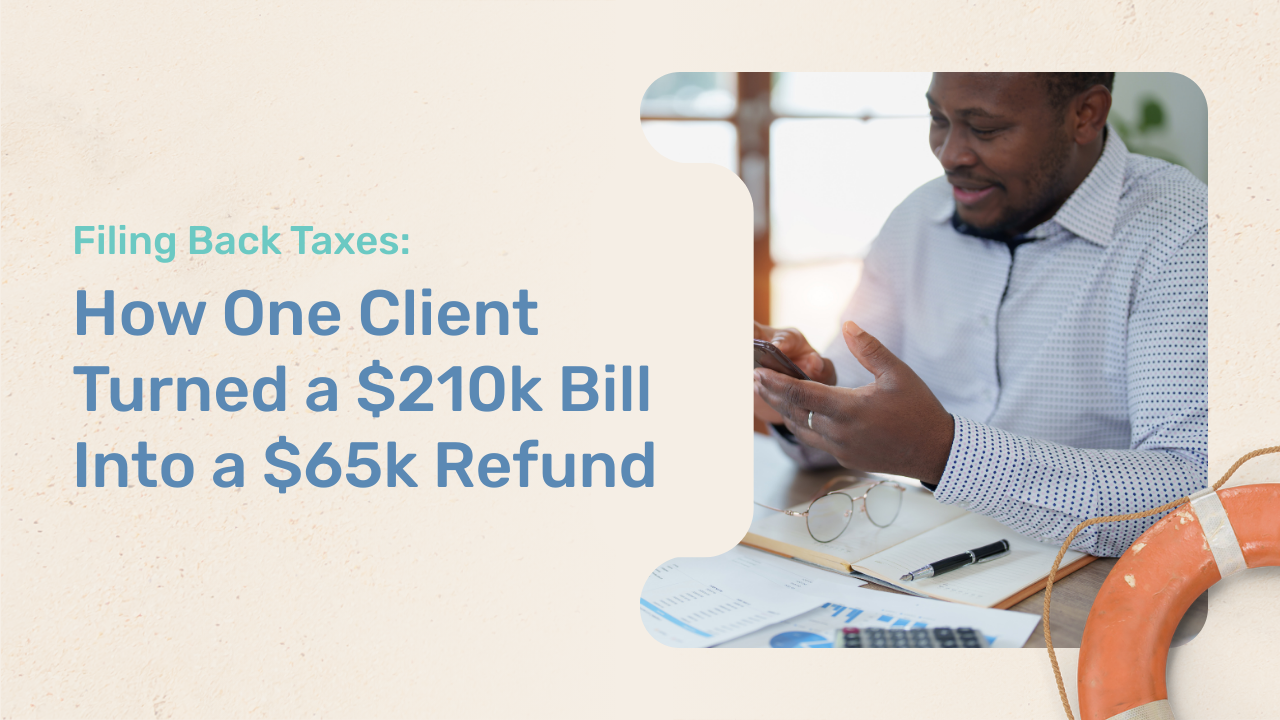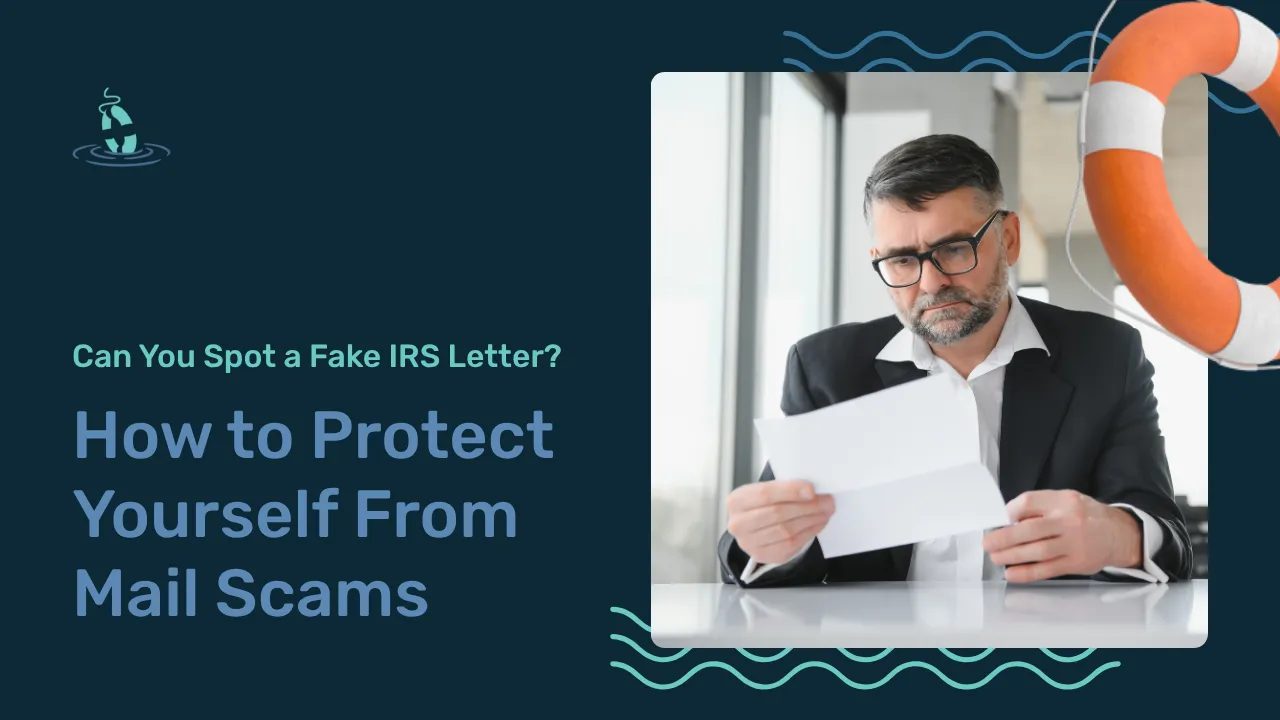
Self employment taxes can be one of the hardest things to navigate for small business owners. Unlike traditional employees who have taxes automatically withheld from their paychecks, independent contractors, freelancers, and small business owners are responsible for setting aside their own tax payments. But with fluctuating income, unexpected expenses, and complicated tax rules, it’s easy to fall behind—leading to mounting tax debt, a self employment tax penalty, and IRS notices.
The good news?
The IRS offers several tax relief programs designed to help self-employed individuals who owe more than they can afford. Whether you need more time to pay, a way to reduce penalties, or even the possibility of settling for less than you owe, there are options available.
In this guide, we’ll walk you through five IRS tax relief programs that can help self-employed individuals reduce their tax burden and get back on track.
1) IRS Installment Agreement (Payment Plans)
If self employment taxes have added up on you and you can’t pay the full amount upfront, an IRS Installment Agreement allows you to break it down into manageable monthly payments. This option is especially helpful for self-employed individuals who have fluctuating income and need time to pay off their balance without facing aggressive IRS collection actions.
To qualify, you typically need to owe less than $50,000 in combined tax, penalties, and interest. The application process is straightforward—you can apply online through the IRS Payment Agreement Tool or submit Form 9465 to request a payment plan. Once approved, you’ll set up automatic payments to gradually pay down your debt.
One of the biggest benefits of an installment agreement is that it keeps the IRS off your back—preventing tax liens, levies, or wage garnishments. It also allows you to budget your payments over time instead of dealing with a lump sum. However, it’s important to note that interest and penalties will continue to accrue until your balance is fully paid, so the sooner you can pay it off, the better.
2) Offer in Compromise (OIC) – Settle for Less
If your tax debt feels completely unmanageable, an Offer in Compromise (OIC) could help you settle for less than what you owe. This IRS program is designed for taxpayers who can’t realistically pay their full balance without experiencing extreme financial hardship. For self-employed individuals facing inconsistent income or overwhelming debt, an OIC can be a lifeline.
However, qualifying isn’t easy. The IRS carefully evaluates your financial situation—including income, assets, and expenses—to determine if you truly can’t afford to pay your full tax bill. If they believe you have the means to pay, even over time, your offer may be rejected.
An Offer in Compromise isn’t a quick fix, but for those who qualify, it can be a game-changer in reducing your self employment tax penalty. If you’re struggling to pay your taxes, it may be worth exploring with the help of a tax professional.
How to Apply for an Offer in Compromise:
- Submit Form 656 (Offer in Compromise) and Form 433-A (Collection Information Statement).
- Provide detailed financial documentation proving that paying your full tax bill would create a significant financial burden.
- Make a non-refundable application fee and an initial payment toward your offer amount.
Benefits of an Offer in Compromise
- If approved, you could reduce your total tax debt significantly.
- Helps avoid IRS collections, including liens and wage garnishments.
- Provides a fresh start without long-term payment obligations.
Drawbacks of an Offer in Compromise
- The IRS rejects most OIC applications—approval is difficult.
- Requires extensive paperwork and financial disclosures.
- You must stay compliant with future tax filings to keep the agreement in place.
An Offer in Compromise isn’t a quick fix, but for those who qualify, it can be a game-changer in reducing your self employment tax debt. If you’re struggling to pay your taxes, it may be worth exploring with the help of a tax professional.
3) Currently Not Collectible (CNC) Status – Pause IRS Collections
If you’re self-employed and genuinely can’t afford to pay anything toward your tax debt, the IRS may temporarily pause collections by placing your account in Currently Not Collectible (CNC) status. This means the IRS recognizes that forcing you to pay would cause significant financial hardship, so they suspend collection efforts until your situation improves.
However, CNC status does not erase your tax debt—it only stops the IRS from actively pursuing collection. Interest and penalties will continue to accrue, and the IRS may review your financial situation periodically to determine if you’re able to resume payments.
For self-employed individuals facing serious financial hardship, CNC status can provide much-needed relief. However, because tax debt continues to grow, it’s best to use this time to explore long-term tax resolution strategies.
How to Qualify for CNC Status
To be placed in CNC status, you must prove that you do not have enough income or assets to cover basic living expenses while also paying your tax debt. The IRS will assess your financial hardship based on:
- Income and necessary living expenses
- Bank accounts and other financial assets
- Business expenses (if applicable)
To request CNC status, you typically need to submit Form 433-F (Collection Information Statement) and supporting financial documentation.
Benefits of of CNC Status
- Temporarily halts IRS collections, including wage garnishments and bank levies.
- Gives you time to improve your financial situation without immediate IRS pressure.
- The IRS cannot demand payments if they approve your hardship claim.
Drawbacks of CNC Status
- Your tax debt is not forgiven—interest and penalties continue to accumulate.
- The IRS may review your status annually and resume collections if your income increases.
- Future tax refunds may be applied toward your tax debt automatically.
For self-employed individuals facing serious financial hardship, CNC status can provide much-needed relief. However, because tax debt continues to grow, it’s best to use this time to explore long-term tax resolution strategies.
4) Penalty Abatement – Reduce or Eliminate Self Employment Tax Penalties
If you’ve fallen behind on your taxes, the penalties and interest can quickly add up—sometimes making what you owe even more overwhelming than the original tax bill. Fortunately, the IRS offers penalty abatement, a program that allows eligible taxpayers to have certain penalties reduced or removed entirely.

For self-employed individuals, this can be a huge relief. Many people miss tax payments due to unpredictable income, unexpected business expenses, or simple filing mistakes. If you’ve been hit with a penalty for not paying self employment tax, you may be able to get them waived—especially if you have a valid reason for falling behind. The IRS considers situations like a natural disaster, serious illness, or errors by a tax professional as reasonable causes for penalty relief. Additionally, if you’ve been compliant with your taxes in previous years, you may qualify for first-time penalty abatement, which is one of the easiest ways to get penalties removed.
Applying for penalty abatement can be done in a few ways. You can call the IRS directly, submit Form 843 (Claim for Refund and Request for Abatement), or send a written explanation detailing why you qualify. The IRS will review your case and determine whether your penalties should be reduced.
Benefits of Penalty Abatement
- Can significantly reduce the total amount owed.
- Available even if you still owe back taxes.
- First-time penalty relief is easier to qualify for.
Drawbacks of Penalty Abatement
- Interest on unpaid taxes cannot be removed—only penalties.
- The IRS does not approve all requests, especially if the reason isn’t well-documented.
- Requires strong evidence to prove reasonable cause.
If your self-employment taxes have accrued penalties, removing those penalties can make a huge difference in making tax debt more manageable. If penalties have been piling up, it’s worth reaching out to the IRS or working with a tax professional to see if you qualify for relief.
5) Consult with a Tax Relief Professional
When it comes to self employment taxes, navigating this on your own can be overwhelming—especially when dealing with IRS paperwork, qualification requirements, and complex tax laws. While some self-employed individuals may be able to set up a payment plan or request penalty abatement on their own, others might benefit from working with a tax relief professional who specializes in resolving tax issues.
A qualified tax relief professional—such as an enrolled agent, can help you:
- Determine which IRS tax relief programs you qualify for.
- Negotiate with the IRS on your behalf to secure better payment terms.
- Ensure that all forms and financial documents are completed correctly to improve approval chances.
Prevent further penalties and collection actions by ensuring compliance with IRS requirements.
When Should You Consider Professional Help?
While some tax issues can be handled independently, it’s a good idea to seek professional assistance if:
- You owe a significant amount and aren’t sure which IRS relief options apply to you.
- The IRS has placed a lien or levy on your assets or income.
- You’ve been contacted about IRS collections or audits.
- You’re struggling to negotiate a manageable payment plan.
Working with a tax professional doesn’t just help resolve your current tax debt—it can also help prevent future tax issues by ensuring that you stay compliant with estimated tax payments, deductions, and filing deadlines.
Take Charge of Your Tax Debt—Relief Is Within Reach
Owing back taxes as a self-employed individual can feel overwhelming, but you don’t have to face the IRS alone. Whether you need a structured payment plan, penalty relief, or expert guidance, there are real solutions available to help you regain control of your finances.
If you’re feeling the weight of tax debt, Tax Lifeline is here to help. Our experienced team can walk you through your best tax relief options, negotiate with the IRS, and help you find a solution that works for your situation.
Don’t wait for the IRS to take action—take control of your self employment tax penalties today. Contact us for a free consultation and start your path to financial relief.
Ready to be pulled to safety?
Grab the lifeline and let’s get you the freedom from tax debt you deserve!
Schedule A Consultation


